Commentary

MICHAEL J. SHARP was a close friend of mine. In the Democratic Republic of the Congo (DRC), he was a Mennonite witness, scholar, and peacemaker. Over the course of five years, first as a Mennonite Central Committee volunteer and then through the United Nations, Sharp cultivated relationships of trust amid dreadful violence. His work in the DRC included demobilizing armed groups, investigating human rights abuses, and reporting to the U.N. Security Council on “creating the conditions for peace” in the Great Lakes region of Africa.
On March 12, Sharp and colleague Zaida Catalan were killed while on a U.N. fact-finding mission in Congo’s central Kasai region. Earlier, they had documented five mass graves in the region. Over the months, the number had risen to 23. The bodies of Sharp and Catalan were found on March 27. The four Congolese members of their travel team remain missing.
Eastern Mennonite University, where Sharp attended as an undergrad, has an international program for peacemakers, with graduates such as Nobel Peace Prize winner Leymah Gebowee. Many return to their home countries to face political violence, torture, and death.
How do Christian peacemakers engage the loss of friends and colleagues? We train and study as hard for peace as soldiers do for war, yet we do not have to “soldier on” when one of us falls. We do not have to appear “strong for the cause”; there is no national myth that forces us to choke back our tears. Christian Peacemaker Teams, where I serve as executive director, immediately gave me leave to grieve and gather with loved ones. My colleagues and friends sat with our devastation. We did not pretend that the world made sense or that “God has everything under control.”

IN MARCH, Speaker of the House Paul Ryan shared his excitement about block grants. “We are de-federalizing an entitlement, block granting it back to the states, and capping its growth rate,” Ryan said. “That’s never been done before!”
Ryan’s enthusiasm should be alarming, not exciting, for Christians. The block grant model is a dangerously ineffective way to protect people when they are economically vulnerable.
What’s a block grant and what’s it good for? A block grant is a fixed amount of unrestricted funding made by the federal government to a state. Traditionally, block grants have been used for law enforcement, school systems, and public transportation, allowing states more flexibility in administering programs as well as the ability to experiment.
Generally, block grants have not been used for entitlement programs, which include Social Security, Medicaid, Medicare, the Supplemental Nutrition Assistance Program (formerly known as food stamps), and Supplemental Security Income, among other programs. Why? Because doing so cuts gaping holes into the safety net that these programs offer those who are struggling, and because “experimenting” with people when they are sick, poor, disabled, or elderly is abhorrent. Scripture is unequivocal on this: We are to honor our elders and care for the poor, widows, orphans, and strangers—the most vulnerable among us.

PEOPLE OF COLOR in the United States are exposed to 38 percent more asthma-producing nitrogen dioxide than are white people. People of color are twice as likely as whites to live without potable water or modern sanitation.
The “big green” environmental movement often focuses on national issues and federal policy, dividing people along partisan lines of red or blue. But churches and low-income communities focus on people and their daily lived experiences. Though both are fighting for just causes, because the environment affects us all, the big greens sometimes overlook the people on the ground or do not represent them accurately.
“We have a moral and spiritual obligation to look at the impact of climate change in general and how it impacts people, including our constituents,” said Rev. Leo Woodberry, pastor of Kingdom Living Temple, an independent African-American church in Florence, S.C.
Woodberry’s church takes a robust approach to local environmental issues, including looking at climate change, air quality, and environmental justice for communities that are over-burdened and vulnerable, particularly communities of color. They also look at “environomics,” said Woodberry. “That’s where the economy and environment meet and allows corporate polluters to come into communities and dump toxins because it’s profitable for them,” he said.
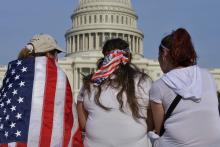
ON MAY 1, 1986, a federal jury found nine church activists guilty of conspiracy to violate U.S. immigration laws for assisting Central American refugees. At our sentencing, I faced a possible 25-year prison sentence.
The “sanctuary trial” drew national attention; millions of Americans learned about the plight of Central American refugees and the church-led sanctuary movement to aid them. After a seven-month trial and our conviction, the judge suspended our sentence and gave us five years of probation.
In the 1980s, our case hinged on the fact that we knew that those arriving over the southern border were refugees from brutal wars in Guatemala and El Salvador. I had worked in Guatemala and in Guatemalan camps in southern Mexican. We placed refugees in communities of faith where people met them as real people and learned why they had fled. We defied U.S. immigration laws in order to protect life. We also challenged the Reagan administration’s support of brutal regimes in Guatemala and El Salvador.
Today, most of the non-Mexican undocumented immigrants coming over the border are from Guatemala, El Salvador, and Honduras. Many are unaccompanied minors or single adults with children. Many have legitimate asylum cases, but don’t have adequate legal representation.
The new sanctuary movement is addressing four key areas: First, assisting migrants when they arrive with basic needs and legal help. Diocesan Migrant Refugee Services in El Paso, Texas, is the largest provider of “Know Your Rights” information to refugees, particularly those staying in community-run hospitality houses along the border. Without the assistance of volunteers, usually church-affiliated, migrants would be on their own—or worse, detained in for-profit prisons.
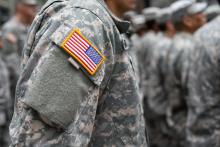
I SERVED FIVE years as a U.S. Army reserve chaplain. This spring I submitted my resignation to the president of the United States. I refuse to support U.S. policies on armed drones, nuclear weapons, and the policy of “preventive war.” I told the president, “I refuse to serve as an empire chaplain.”
I grew up skeptical of military solutions and decided not to register for the Selective Service System when I turned 18. How, then, did I end up in the Army?
The call to bring my religious values of justice and compassion into the Army chaplaincy came in response to three realities: soldiers burdened by multiple deployments, a military replete with uniformed evangelicals occupying Muslim lands, and the torture at Abu Ghraib.
As chaplain I was pastor: nurturing the living, caring for the wounded, and honoring the dead. However, I also claimed the prophetic biblical imperative to “speak truth to power.”
When I witnessed drone warfare in Afghanistan, my anguish peaked. In 2012, I preached a sermon titled “A Veterans Day Confession for America” lamenting drone killing and “preventive war.” Military commanders reacted harshly. I was discharged with a reprimand and negative evaluation. I learned that U.S. military chaplains are not allowed to have a prophetic voice; they are expected to be nothing more than empire chaplains.

TWENTY YEARS AGO, President Bill Clinton promised to “end welfare as we know it” by signing into law the Personal Responsibility and Work Opportunity Reconciliation Act, otherwise known as “welfare reform.”
Controversial at the time, the law placed a five-year time limit on government financial assistance to those in need and instituted work requirements for welfare recipients. With two decades of hindsight, there is now sufficient evidence to evaluate its effectiveness, the holes it created in our nation’s social safety net, and what needs to be done to address them.
One of the best examinations of this law’s effects is the insightful book $2.00 a Day: Living on Almost Nothing in America. Scholars Kathryn J. Edin and H. Luke Shaefer note that welfare reform has succeeded in important ways. “Poor single mothers,” they write, “left welfare and went to work in numbers that virtually no one expected. In 1993, 58 percent of low-income single mothers were employed. By 2000, nearly 75 percent were working, an unprecedented increase.” While the Great Recession reversed some of this progress, the employment rates remain “above pre-reform levels.” Child poverty rates also fell after welfare reform’s passage and remain down, though the authors note that additional measures, such as the expansion of the Earned Income Tax Credit and increased government spending on child-care programs, also factor into this decline.
But the outcomes are not universally positive. In the first 15 years after passing welfare reform, the number of people living in “$2-a-day poverty” had more than doubled.
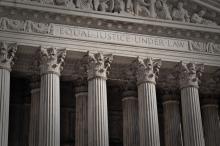
PROVIDING A definition of religious freedom is fairly easy: Every human person has a right to believe, to pray, to worship in community, and to practice her faith according to her conscience. And it’s just as easy to get Americans to agree that religious freedom is an important, even crucial, element of a healthy society. But ask what it means to respect this human right and where it’s being violated, and you quickly find yourself in the weeds of rancorous debate.
On the one hand, conservative Christians have raised religious freedom alarms in the U.S. Television personalities David and Jason Benham, for instance, cite such concerns in their objections to ordinances allowing transgender people to use bathrooms that correspond with the gender with which they identify; a National Review columnist wrote that such policies “would render religious liberty permanently subordinate to the interests and demands of LGBT activists.”
Does sharing a bathroom with a transgendered person infringe upon the consciences of those who consider transgender identity a threat? And even if it does, does the state’s role in protecting the rights and dignity of all citizens sharply relativize this concern? Are the questions perhaps more complex than our binary culture wars suggest?
Or consider: For five years, critics of the mandate of contraceptive coverage by employer health plans under the Affordable Care Act have insisted that the policy violates religious freedom. Several businesses and organizations—Hobby Lobby, the Little Sisters of the Poor, and more—have sued the federal government on the point. And despite its decades-long advocacy of universal health coverage, the U.S. bishops’ conference initiated an annual “Fortnight for Freedom” observance that even some allies find inappropriately partisan.
Some who gnash their teeth over these issues seem unconcerned about other offenses to religious freedom. They said little, for example, about state government efforts to interfere with Christian ministry to migrants and refugees. Indiana Gov. Mike Pence not only withdrew his state’s help to Syrian refugees trying to escape a historic humanitarian crisis, he also tried to convince the archdiocese of Indianapolis to cease its ministry to them.
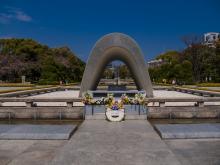
THE INTERNATIONAL community has agreed that nuclear weapons should be eliminated, and the rhetoric surrounding these weapons sounds promising at times, but little has been achieved to reach a world free of nuclear weapons.
President Obama is the first sitting U.S. president to visit Hiroshima, Japan, the site of the first nuclear weapon used in war, and his speech there in May was beautifully crafted, highlighting his personal commitment to this issue. However, his words haven’t matched his actions as president.
Not only have the U.S. and other nuclear-armed states failed to fulfill their commitments to nuclear disarmament, but each is currently pursuing enormously expensive upgrades and modernization programs. These countries are developing new, more-modern nuclear weapons and delivery systems, extending the planned possession of nuclear weapons for decades to come.
Twenty-five years after the end of the Cold War, more than 15,000 nuclear weapons still exist. Nine nations still possess them: the U.S. and Russia have 93 percent of the world’s nuclear warheads, followed by China, the United Kingdom, France, India, Pakistan, Israel, and North Korea. Many more states, such as all NATO members, together with Australia, Japan, and South Korea, are part of extended nuclear deterrence agreements—some even stationing nuclear weapons on their territory.
By allowing such a large number of nuclear weapons to remain, the risk of an accident increases. Nearly 1,800 nuclear warheads are kept on high alert, ready to launch within minutes. New research paints a worrying picture of near misses, security breaches, and other events that could cause catastrophe. Some say that the risk of a nuclear detonation is higher today than at the end of the Cold War.
IN HIROSHIMA, Obama called for a “moral revolution” in order to reach a world free of nuclear weapons. But such a moral revolution will not be led by those who possess these weapons of mass destruction. Instead, the world is witnessing a surge in leadership from around the globe. A new focus on the humanitarian impact of nuclear weapons has emerged that looks at these weapons for what they are: indiscriminate, inhumane, and unacceptable.

THE PANAMA PAPERS was the largest information leak in history. Revelations continue to unfold about how one Panamanian law firm, Mossack Fonseca, used anonymous shell companies to help its clients avoid taxes and scrutiny from law enforcement. These shell companies are created on paper and don’t disclose their true owners.
The Panama Papers scandal isn’t just about taxes. It’s about conflict, corruption, war, and human trafficking. It’s about whether or not our financial system will fuel conflict and instability around the world. If we think this is an “offshore” problem, then we are deeply mistaken. This is very much a U.S. problem. Americans don’t need to go to Panama to hide their money because they can do it here at home.
To paraphrase one analyst: The world’s largest financial secrecy jurisdictions are in fact islands, but not the islands we think of when we think of tax havens. They are the islands of the United Kingdom and the island of Manhattan.
It isn’t difficult to set up this type of company in the U.S., particularly in states such as Delaware and Nevada where financial secrecy is widespread. Currently no U.S. states require that these shell companies disclose the identity of their owners. Legislation in Congress—the Incorporation Transparency and Law Enforcement Assistance Act, which is supported by several religious organizations—could change that by giving law enforcement access to owner information. Shell companies have facilitated human trafficking, terrorism, weapons trafficking, and drug running. Jubilee USA notes that some U.S.-based shell companies are used to steal from the poor. One case Jubilee USA cites is that of the son of Equatorial Guinea’s dictator, who used U.S.-based anonymous companies to steal money from his starving people and to buy a mansion in Malibu, Calif., among other extravagances.

WEST VIRGINIA’S coal-addicted economy is busted. Dozens of bankrupt coal companies are busted. A coal company CEO is busted for flagrant safety violations that contributed to an explosion killing 29 miners.
Boom-and-bust cycles have a jagged history in the central Appalachian coal basin of southern West Virginia, eastern Kentucky, and southwest Virginia. America’s industrial revolution prospered on Appalachia’s steam and coking coal. Hard-gained union struggles brought miners and their communities an improved living standard. Yet as time marched on, machinery replaced miners, the coal industry busted unions, Appalachian coal seams played out, and cheaper Western coal and fracked shale gas outcompeted.
Coal-dependent economies are now tanking. Miner layoffs have skyrocketed. Policymakers have long ignored forecasts of coal’s impending decline. The West Virginia legislature, facing a major state revenue shortfall, is considering drastic budgetary cuts—such as closing state parks, college branch campuses, and state police detachments—while, incredibly, introducing bills to attempt to bring back the coal industry by reducing its severance and worker-compensation taxes.
Coal will not bounce back. From coal’s perspective, the national debate on coal and climate change has largely been lost.
The Clean Power Plan announced by the EPA in June 2014 seeks to reduce climate-warming CO2 emissions 30 percent by 2030. Projected air quality improvement will also deliver significant financial and life-protecting health benefits. However, since West Virginia politicians dance to the strings of their coal-industry puppet masters, State Attorney General Patrick Morrisey is leading a coalition of 25 states asking a federal court to strike down the Clean Power Plan, calling it a “war on coal.”

THIS SPRING, the Vatican hosted a historic convocation focused on what Pope Francis called “the active witness of nonviolence as a ‘weapon’ to achieve peace.”
Eighty participants from around the world told striking, at times heroic, stories of nonviolent peacemaking at the Rome gathering, convened by the Catholic peace movement Pax Christi International and the Vatican’s justice and peace office.
Many of them arrived directly from situations where they are mediating between violent factions using pragmatic nonviolence fueled by Christian faith—as in Uganda, Iraq, Colombia, and Mexico. Others are engaged in nonviolent peacebuilding in regions recovering from traumatic violence—as in Sri Lanka, Kenya, and the Philippines. Some are active in unarmed civilian accompaniment, shielding people under threat of violence—as in Palestine, Syria, and South Sudan. Theologians, ethicists, and international policy negotiators contributed broader context to the situational experiences.
The conversation focused on four key questions: 1) What can we learn from experiences of nonviolence as a spiritual commitment of faith and a practical strategy in violent situations across cultural contexts? 2) How do recent experiences of active nonviolence help illuminate Jesus’ way of nonviolence and engaging conflict? 3) What are the theological developments on just peace and how do they build on the scriptures and the trajectory of Catholic social thought? 4) What are key elements of an ethical framework for engaging acute conflict and addressing the “responsibility to protect” rooted in the theology and practices of nonviolent conflict transformation, nonviolent intervention, and just peace?
The convocation concluded with an astonishing document, presented to Pope Francis, titled “An appeal to the Catholic Church to recommit to the centrality of gospel nonviolence.” Recommendations included a request for a papal encyclical calling Christians to return to their fundamental vocation of nonviolent peacemaking. That means rejecting just war theory as the “settled teaching” of the church and replacing it with Jesus’ life and teaching as the foremost guide.

THE STATE OF THE U.S. working class gives us many reasons to feel discouraged. Wages have stagnated even as productivity has increased significantly. With independent contracting and the “gig economy,” jobs have become less secure. The Bureau of Labor Statistics predicts that most job growth will be in low-paying fields, such as home health care and food service. Union membership, a central measure of the social cohesion and political power of the working class, has fallen to 11 percent, down by almost half since the early 1980s.
Medical research links economic frustration to rising death rates among middle-aged whites and addiction among younger adults. Long encouraged to believe that hard work would translate into economic stability, working-class people have, as one of the researchers, Angus Deaton, put it, “lost the narrative of their lives.”
Two important shifts in how people think about class and work suggest reasons for cautious optimism. They also suggest possible roles for faith-based organizations.
The first reason might seem counter-intuitive: Americans in general, and younger Americans in particular, increasingly identify themselves as working class. Gallup polls over the past 15 years show that the number of Americans who identify themselves as upper-middle or middle class has fallen by 12 percent, while the number who identify as lower or working class has risen by 15 percent. More than 56 percent of millennials identify as working class, compared with 44.2 percent of baby boomers. Even younger adults with college degrees—which pollsters often use to identify respondents as middle-class—find themselves working part-time, low-wage jobs, struggling with student loan debt, and unable to afford the traditional markers of adulthood, such as home ownership. These surveys (and this year’s political campaigns) suggest growing anger over economic inequality, but as community organizers know, frustration and anger can inspire action.

WITH THE RECENT decision to open combat positions in the U.S. armed forces to women, Selective Service registration is back in the news, in the courts, and in Congress. While much of the debate has focused on issues of gender—will young women be required to register?—the problems with draft registration are extensive and worthy of more thorough consideration.
For many people of faith and people of conscience, questions around Selective Service registration are not new, and, ethically speaking, nothing is different now that women may be part of the equation. For many, the questions around Selective Service registration have long been ones of preparation for war, militarization of our communities, and coercion of individual conscience.
The Selective Service act of 1917 launched the modern American version of the government raising an army in a time of war. In 1975, following the Vietnam War, draft registration was suspended, but it was reinstated under President Carter in 1980 and continues today. There is no option to register as a conscientious objector, no matter one’s religious beliefs.
Over the last 35 years, millions of young men have violated the law by failing to register. Only 20 of them have been prosecuted for the felony offense—19 of those were resisting for reasons of faith or conscience.
The last indictment for failure to register was filed in 1986. The government thought it would prosecute a handful of resisters to set an example and encourage compliance. The strategy backfired. When these conscientious objectors were interviewed on the evening news, claiming allegiance to a higher moral law, noncompliance with registration actually increased, much to the government’s dismay. It had underestimated the power of conscience. It failed to take into account a universal truth: When we follow the counsel of our conscience, we tend to make better decisions.
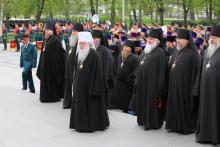
EASTERN ORTHODOX churches often pass beneath the media radar, despite their status as truly ancient. The attacks by ISIS on Orthodox communities in Syria, Iraq, and elsewhere have brought into focus dwindling populations of Christians in the Middle East. Russia’s invasion of Crimea and popular uprisings in Kiev raised the alarm on the tenuous position of Ukrainian Orthodox churches.
In February, headlines were made again when Pope Francis and Patriarch Kirill met in Cuba, the first-ever meeting of a pope and a Moscow patriarch. Additionally, a historic meeting will be held in June on the Greek island of Crete, bringing together leaders of all 14 loosely linked Orthodox churches for the first time in 12 centuries.
Both the pope-patriarch encounter and the troubled preparations for the convening of the pan-Orthodox leaders are extremely complex; one might call them Byzantine.
The meeting between the pope and the patriarch of the Russian Orthodox Church was years—and several papacies—in the making. There were always obstacles, not the least of which was the Soviet system and bitter internecine church wars in Ukraine that pitted the Roman Catholic-affiliated Ukrainian Greek Catholic Church against the Russian Orthodox Church. After the end of the Soviet regime, the UGCC entered a renaissance and the Orthodox churches in Ukraine splintered, which Moscow has cited as a reason for refusing any meeting between the Russian Orthodox and Roman Catholic Church.
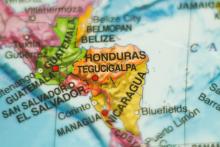
THE WORD MARTYR means “witness.” In times past, it meant dying for one’s beliefs; but increasingly it means dying for one’s faith because of justice.
On March 3, Honduran Indigenous leader Berta Cáceres was brutally murdered in her home. As co-founder of the Civic Council of Popular and Indigenous Organizations of Honduras, Cáceres had led the Lenca Indigenous communities in a nonviolent struggle to defend the sacred lands, forests, and water that her people have protected for generations.
She was beloved by many around the world for her extraordinary leadership on the environment, recognized in 2015 when she received the Goldman Environmental Prize for “sustained and significant efforts to protect and enhance the natural environment, often at great personal risk.” Her assassination sparked a global outcry, including a demand from the Vatican for an independent investigation into her death.
Cáceres’s life and death is a witness to what Pope Francis calls “the cry of the earth and the cry of the poor.” Her martyrdom embodies the intimate connection between creation justice and social justice for the poor that is at the heart of Francis’ recent encyclical on the environment.
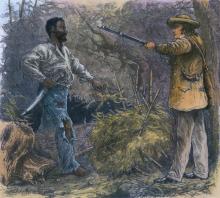
WHEN ONE THINKS of black environmental liberation theology, the name of slave-rebellion leader Nat Turner might not immediately spring to mind. Perhaps it should.
A biopic on the life of Turner, called The Birth of a Nation, is scheduled for release in October. Based on early reviews, I expect the film by director Nate Parker (Red Tails, Arbitrage) to deliver a powerful recounting of Turner’s life.
In 1831, Turner led enslaved and free African Americans in a rebellion against slaveholders in Southampton County, Va. The uprising was swift, violent, and bloody. At least 200 African Americans and more than 50 whites died. After whites quelled the rebellion, Turner hid in the woods for several weeks. He was eventually captured and executed.
Turner’s time alone in the woods offers surprising insights. He is an African-American man familiar with nature. He is a Christian preacher given to visions. From that arises a deep environmental wisdom.
The original report of the slave rebellion is found in The Confessions of Nat Turner, The Leader of the Late Insurrection in Southampton VA, as told by Turner to a white lawyer in Richmond, Va. “The blood of Christ [that] had been shed on this earth, and had ascended to heaven for the salvation of sinners,” Turner says in the book, “was now returning to earth again in the form of dew.”
Turner’s visions were based on his understanding of the Bible. He was literate (that in itself was unusual for one enslaved) and worshipped God. Turner was a prophet of God, in the context of nature and revolt.

IN MY HUMAN development class recently, the instructor showed a documentary about a 13-year-old girl with the pseudonym Genie. Her parents kept her in isolation for most of her life, until a social worker discovered her. Genie was kept in a room, tied to a chair, with virtually no human contact. She was “uncivilized” and could barely walk or talk. While my classmates gasped in horror at the video, I found myself relating to her.
I had been incarcerated in a California juvenile hall for four-and-a-half years. Roughly two months of that time was spent in solitary confinement—the longest stretch was six weeks. Like Genie, I was isolated in a room for 23 to 24 hours a day.
My classmates thought that Genie’s parents were “monsters” and “horrible” people. I wondered how many of them knew that we live in a country where youth and adults are commonly put in similar conditions for months or even years.
Today about 100,000 people—including thousands of youth—are held in solitary confinement housing units in juvenile facilities and adult jails and prisons across the United States. Systems use solitary confinement, or isolation, to keep individuals safe from themselves or others and for punishment. Solitary confinement has been linked to depression, anti-social behavior, anxiety, psychological damage, and self-harm. We now understand that solitary confinement does not keep us safe and does more harm than good, especially to youth who are still developing, physically and mentally.

ADD LIBYA TO the growing list of countries where the United States is conducting military operations in the name of fighting terrorism.
In February, a U.S. airstrike in the town of Sabratha in western Libya killed more than 40 people. The intended target was said to be Noureddine Chouchane, a senior commander of the so-called Islamic State (ISIS) from nearby Tunisia, but there has been no independent confirmation that he was at the site. Among those killed in the attack were two Serbian embassy staff who were being held hostage by ISIS.
Since the overthrow of the Gadhafi regime in 2011, Libya has been engulfed by chaos. There are now two competing governments—one in the eastern city of Tobruk (recognized by the United Nations) and the other in Tripoli—neither with much power or public support. Real power in the country is in the hands of hundreds of militia groups that rule local areas and often support rival government factions. Many of the militias oppose the presence of foreign forces, and the Tripoli-based government vigorously criticized the U.S. attack on Sabratha.
Pentagon commanders believe that bombing and commando operations can reduce the terrorist threat in Libya, but the experience of military intervention in other countries during the past 14 years suggests otherwise. U.S. military attacks have not brought stability and peace to Afghanistan, Iraq, Yemen, Somalia, or Syria. Why do we think they will solve the problems now in Libya?
The United States fought a major war in Iraq to suppress al Qaeda, but that organization morphed into the even-more-dangerous menace of ISIS. The U.S. has conducted more than 10,000 military strikes against extremist targets in Syria and Iraq during the past 18 months, but the threat from ISIS in the region remains formidable and is now spreading to Libya.
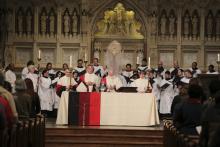
THE ANGLICAN COMMUNION is a beloved, global, traditional, innovative, challenging, frustrating, and sometimes very confusing institution. A lot like families I know.
On Jan.14, a majority of the Anglican senior leaders voted that, for a period of three years, no one from the Episcopal Church’s 109 dioceses in the United States and 17 other countries may “[any] longer represent us on ecumenical and interfaith bodies, should not be appointed or elected to an internal standing committee, and that while participating in the internal bodies of the Anglican Communion, they will not take part in decision making on any issues pertaining to doctrine or polity.”
This action came in response to a decision made by the Episcopal Church last July to remove its canonical language that confines marriage to unions between a man and a woman and authorizes two new marriage rites with language for use with same-sex or opposite-sex couples.
Yet the Anglican leaders also unanimously expressed their desire to “walk together in the grace and love of Christ” as this process unfolds.

FOR CHRISTIANS who live near the U.S.-Mexico border, Jesus’ command to “love our neighbors as ourselves” takes on a particular urgency when we see our neighbors fleeing violence from their home countries and then being deported back at an alarming rate.
At Southside Presbyterian Church in Tucson, where I am pastor, we have a history of loving our neighbors by offering them protective sanctuary to shield them from deportation.
Sanctuary is an ancient biblical tradition. In Exodus, Numbers, Deuteronomy, Joshua, and 1 Kings, scriptures describe the right of asylum in cities of refuge set aside for those accused of manslaughter until the truth of the matter could be resolved. There is also the tradition of those who seek the safety of the temple by clinging to the “horns of the altar” (1 Kings 1:50).
In the U.S., churches involved in the abolitionist movement and the Underground Railroad provided sanctuary to escaping slaves. In the Vietnam War era, churches protected conscientious objectors. During the brutal wars in Central America in the 1980s, hundreds of U.S. churches declared a national sanctuary movement, protecting tens of thousands of refugees from being deported to almost certain death. Southside Presbyterian was one of the founding churches of the 1980s sanctuary movement.
In May 2014, after another wave of deportations, our congregation made a public declaration to once again become a sanctuary church. We welcomed Daniel Ruiz, a local undocumented father, into protection. After 28 days living in the church, he received a stay of deportation.